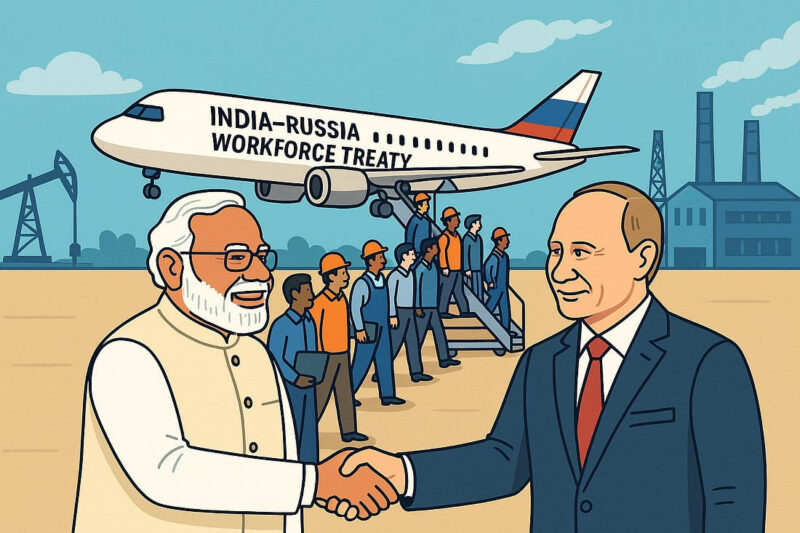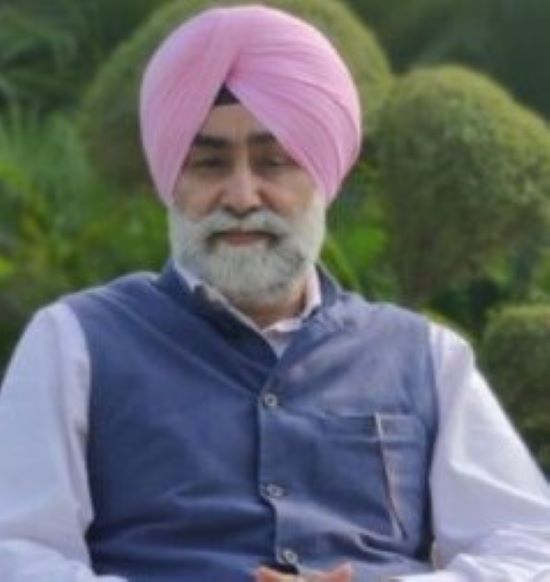 When Prime Minister Modi met President Putin at the SCO Summit this week, the world focused on oil, trade, and the war in Ukraine. But another opportunity is quietly taking shape—one that could help both nations in a very practical way: people.Russia is running severely short of manpower. Its population is shrinking, its birth rate is low, and the war has taken away many young workers. Industries from construction to manufacturing, from energy to agriculture, are struggling to find employees. The Russian government knows this is not a short-term hiccup. Without more workers, the economy cannot grow.
When Prime Minister Modi met President Putin at the SCO Summit this week, the world focused on oil, trade, and the war in Ukraine. But another opportunity is quietly taking shape—one that could help both nations in a very practical way: people.Russia is running severely short of manpower. Its population is shrinking, its birth rate is low, and the war has taken away many young workers. Industries from construction to manufacturing, from energy to agriculture, are struggling to find employees. The Russian government knows this is not a short-term hiccup. Without more workers, the economy cannot grow.
India, on the other hand, has the opposite challenge. Every year, millions of young Indians enter the job market. We have engineers, technicians, IT specialists, and also a large pool of semi-skilled labour. But jobs at home are not enough. Traditional destinations like the United States, Canada, and Australia are tightening their visa rules. The U.S. is slowing down H-1B visas, Canada has cut student numbers, and Australia is capping entries. The doors that once absorbed India’s surplus manpower are no longer as open.
This is where a work force treaty between India and Russia could be a game-changer. If India could send trained, certified, and protected workers to Russia under an official agreement, both sides would win. Russia would get the hands it needs to keep its industries running. India would get secure employment opportunities for its youth and steady remittances flowing back home.
Of course, the biggest hesitation is salaries. Russia cannot match U.S. or European pay scales. But a safe, legal pathway to work—backed by contracts, insurance, and housing—is far better than fake offers or irregular migration. Even at lower wages, the Russian option can make sense for skilled workers who today struggle to find stable jobs.

Is former Member of Punjab Public Service Commission
A farmer and keen observer of current affairs
For this to succeed, a strong institutional framework is essential. Ad-hoc recruitment will not do. India would need a dedicated structure inside the Ministry of External Affairs or Ministry of Labour to manage workforce exports specifically to Russia, a strong base in the Indian Embassy and new consulates to safeguard workers, resolve disputes, and enforce contracts, a clear matching mechanism between Russia’s manpower demand and India’s manpower supply. Without coordination, we risk oversupply, chaos, or exploitation.
In short, managing such a large labour flow would require nothing less than a “ministry within a ministry.” The opportunity is huge, but only if it is managed professionally.
For Russia, this inflow of Indian workers would not just fill labour gaps. It would deepen ties with India, soften its growing isolation from the West, and create a strong quid pro quo—labour in exchange for energy, trade, and technology partnerships. For India, it would diversify migration choices beyond the Gulf and the West, creating a new Eurasian corridor for our manpower exports.
The key is dignity. Workers must not be pushed into unsafe zones or military roles. Wages should be fair by Russian standards, with housing, insurance, and healthcare included.
India has shown in the Gulf that structured manpower agreements can be a win-win. With Russia now facing its most severe labour crisis in decades, the time is ripe to build a similar model.
At a moment when the West is closing doors, India and Russia have a chance to open a new one. Managed wisely, a manpower treaty could be the most practical and mutually beneficial step the two “shoulder-to-shoulder” partners take this decade.